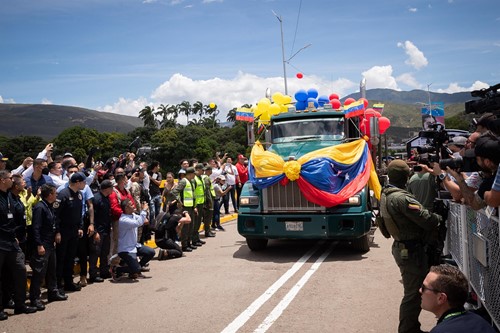
Colombia and Venezuela officially reopened their common border, which had been closed for seven years, on Monday 26 September, with a ceremony led by President Gustavo Petro and, on the Venezuelan side, the governor of the state of Táchira, Freddy Bernal.
The ceremonial act took place on the Simón Bolívar international bridge, the main border crossing between the two countries, and included the passage of the first cargo trucks in both directions.
The ceremonial act took place on the Simón Bolívar international bridge, the main border crossing between the two countries, and included the passage of the first cargo trucks in both directions.
President Petro was accompanied by his ministers of Foreign Affairs, Álvaro Leyva; Trade, Industry and Tourism, Germán Umaña; and Transport, Guillermo Rayes. The Venezuelan delegation was made up of the Minister of Transport, Ramón Velasquez; the Minister of Industry, Hipólito Abreu; and the Superintendent of Seniat (Treasury), José David Cabello.
“May all that is going to happen today be for the prosperity of the people of Norte de Santander and of Colombia,” Petro said before the ceremony began. Immediately afterwards, a truck decorated with the Venezuelan flag and yellow, blue and red balloons blew its horn as it drove slowly across the Simón Bolívar bridge.
The bridge connects the Colombian town of Villa del Rosario, in the metropolitan area of Cúcuta, capital of the department of Norte de Santander, with the Venezuelan city of San Antonio, in the state of Táchira.
Some estimates suggest that the reactivation of the border would bring Colombia 6.5 billion dollars in exports and generate more than 120,000 jobs. It is also expected to have an impact on politics, exchange and cooperation for social, cultural and historical development; improvements in security and a resurgence in trade, goods and services
Petro’s electoral victory in Colombia has represented a new direction for relations with Venezuela, and the reopening of the border has a positive impact not only on the border population but also on the commercial infrastructure of Latin America, making it a fundamental step towards regional integration.
